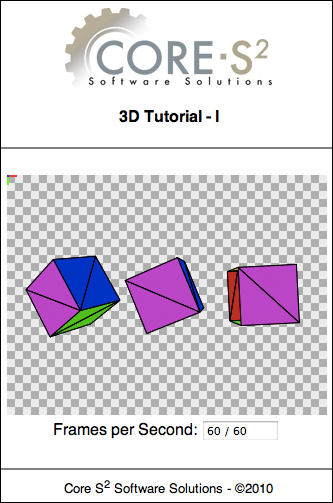A while back, right when I was starting to learn how to program, I found a little CAD (Computer Aided Design – basically 3D modeling) application for my programable graphing calculator (a TI-89). The application was horribly slow – it had an “amazing” render speed of a new frame every three seconds! If you know your away around it, you could even prevent it from crashing well after a few minutes of light usage!
Even though the application was pretty rough, it got me wondering as a kid: how in the world could I program this? How does 3D actually work? It took me a few weeks of research, coding, some ugly hacks, and some nasty code to finally get my own program with similar functionality up and running. When I finally got things working, the moment I saw my first rotating 3D cube was the moment I decided programming was for me! Solving this little question of 3D graphics was the big step that pushed me into computer science.
It’s now a dozen years later and I hope to inspire the next generation of programmers with the same experience, solving the same question: “How do I draw/program 3D?”
I’ve started a three-part tutorial teaching new or novice level programmers on how to solve this problem. These tutorials will not use any sort of library or wrapper – they go straight to the lowest level when it comes to 3D graphics! These tutorials are not meant to answer the question “how do I draw my 3D character” or “how do I program a 3D game?” These tutorials are more fundamental, asking “how does OpenGL or DirectX work?” which I hope inspires programmers and doesn’t scare them away with the complexity of modern graphics libraries.
The first tutorial is linked here, and will be placed within the root directory of this website. Expect future tutorials within a few days.
